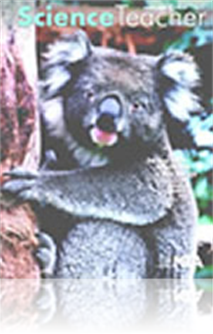All The Science Teacher resources
Journal Article
Intelligent Teaching: Using the theory of multiple intelligences in the inquiry classroom
Incorporating the theory of multiple intelligences (MI) into the science classroom can create a better learning environment for all students. In this article the authors discuss the MI theory and offer suggestions for incorporating it into inquiry-ba...
Journal Article
Pulse Rate Research: Students follow the steps of inquiry to compare carotid and artery pulse rates
This pulse rate study was inspired by observations about how people take their pulses. It exemplifies how the scientific inquiry process can be demonstrated in the classroom. ...
Journal Article
Do Standards Matter? How the quality of state standards relate to evolution instruction
Although most states include evolution instruction in their standards, the teaching of evolution in public schools remains problematic. To create successful science education programs, we must recruit and reward educators who effectively teach this b...
Journal Article
Particle Physics Primer: Explaining the Standard Model of matter
For the past 35 years, scientists have developed a more basic model of the universe—the Standard Model—that specifically addresses the age-old question, "What is the world made of?" The Standard Model of matter provides the most current understan...
Journal Article
Commentary: Toxins and Society
An opinion piece about the presence of chemicals in society and the safety and health concens. Learning about biological or chemical agents should educate students on the effects of these materials. This lesson leads students through the risk-assessm...
Journal Article
What Students Think: College students describe their high school chemistry class
A college chemistry professor teaching first-year students was curious whether there was a link between student attitudes about chemistry and experiences they had in their high school chemistry classes. The survey results are presented in this articl...
Journal Article
Solving Authentic Science Problems
Problem-based learning (PBL) connects science to the world beyond school. This article describes the benefits of using PBL problems as a center of science curriculum. The authors offer suggestions and resources for problem design, data acquisition, a...
Journal Article
Science teachers often seem to serve two masters—the drive for producing science specialists and the drive for general science education. So, what is the goal of science education? In this article, the issue is debated as the results and implicat...
Journal Article
Applying Age-Old Physics: Using ancient inventions to teach modern physics concepts
Despite daily use of computers, cell phones, and sound systems, students are fascinated by the technology that our ancestors once used to survive. Ancient inventions are great tools for fostering understanding of physics content and real-world appli...
Journal Article
An inquiry-based Earth science activity applies the concepts of density using real-life investigations that take advantage of students’ interest in dinosaurs. The teacher creates simulated rock and fossil samples from which students collect data, c...
Journal Article
Searching for the Perfect Lesson: Teaching evolution to a diverse biology class
In a heterogeneous class, where students have different experiences and abilities, many activities can involve students at various levels. In this article, a high school biology teacher constantly seeks to improve the way she educates this type of cl...
Journal Article
Commentary: Getting Students to Tune In
An opinion piece about finding substantive material and delivery that engages students, so they will want to "tune in" and learn....



